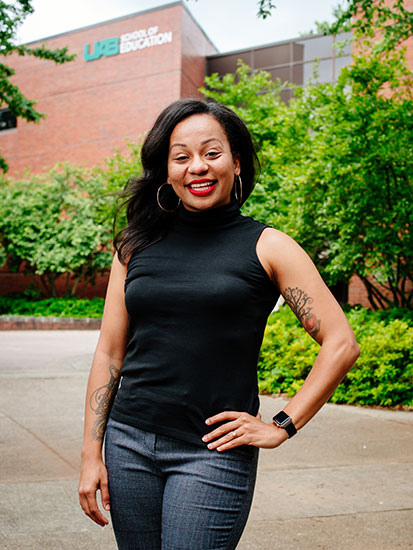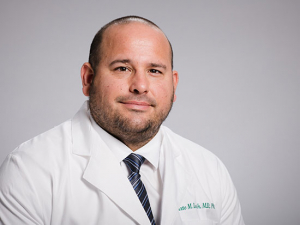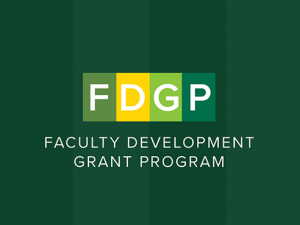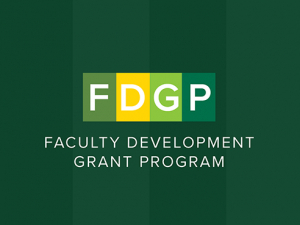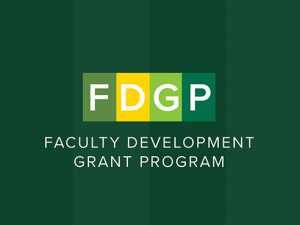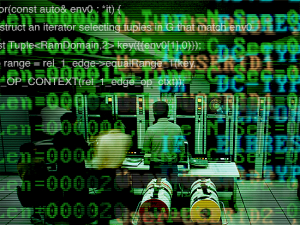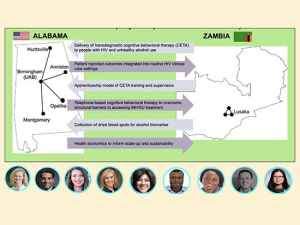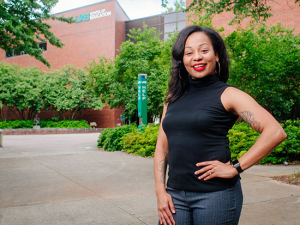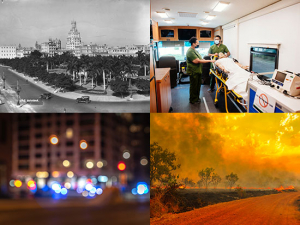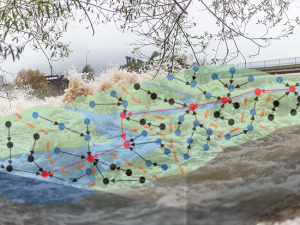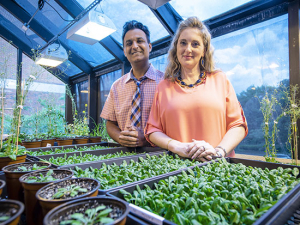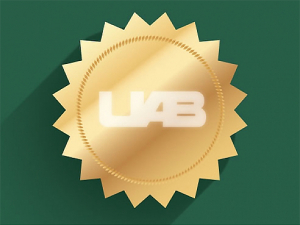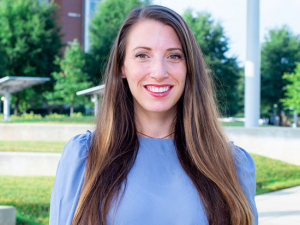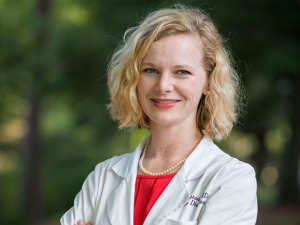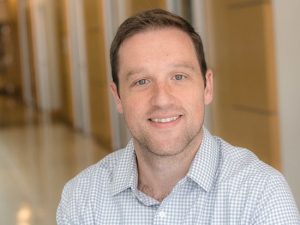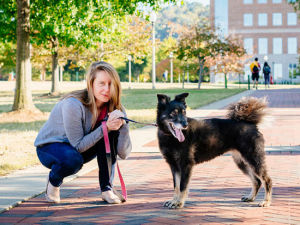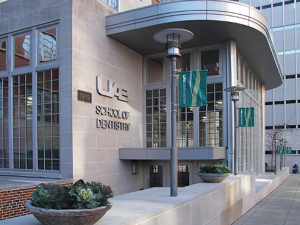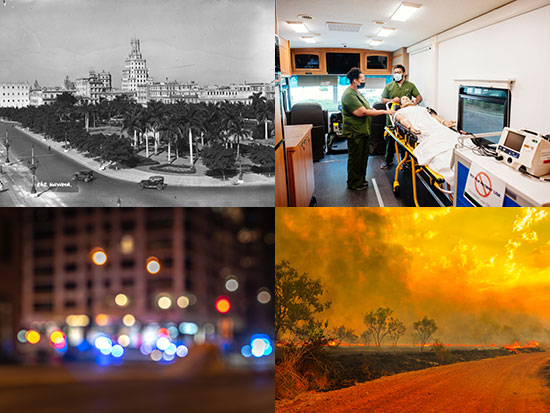 The UAB Faculty Development Grant Program offers one-year awards to accelerate scholarship, research and creative works. Current and recent projects made possible by the grants include a book on Latin American protest literature, innovations in simulation, an in-depth account of police torture in Chicago and a documentary on Australian bush fires.Good luck trying to find even a simple online summary of the bloody short stories that reverberated across Latin America in the late 19th and early 20th centuries. There is nowhere to look, online or off, for a map of critical mutation hotspots in SARS-CoV-2, or a detailed analysis of the centuries-old slanders that lie behind social media attacks in Eastern Europe, or a science-backed theory of how to preserve dignity and humanity in the face of a dementia diagnosis.
The UAB Faculty Development Grant Program offers one-year awards to accelerate scholarship, research and creative works. Current and recent projects made possible by the grants include a book on Latin American protest literature, innovations in simulation, an in-depth account of police torture in Chicago and a documentary on Australian bush fires.Good luck trying to find even a simple online summary of the bloody short stories that reverberated across Latin America in the late 19th and early 20th centuries. There is nowhere to look, online or off, for a map of critical mutation hotspots in SARS-CoV-2, or a detailed analysis of the centuries-old slanders that lie behind social media attacks in Eastern Europe, or a science-backed theory of how to preserve dignity and humanity in the face of a dementia diagnosis.
These are the sorts of problems that scholars and researchers tackle, but this work doesn’t come cheap. Stewart Brand famously said that knowledge wants to be free. The rest of his quote is far less well known; but it is all too familiar to people in academia: Knowledge also wants to be expensive, because it is both valuable and difficult to produce.
For more than two decades, the UAB Faculty Development Grants Program has offered one-year awards (now typically around $10,000) to accelerate scholarship, research and creative works. The program, funded by the Office of the Provost and the faculty member’s department and school, is open to assistant professors with less than $100,000 annual funding. (All 21 winners from the 2021 awards are listed here.)
“The program helps faculty take on creative new efforts for which funding is not generally available,” said Provost Pam Benoit. “Funding faculty in this way enables them to build new skills to enhance peer recognition across campus and beyond UAB.”
For the past two years, Chris Biga, Ph.D., associate professor and director of Undergraduate Studies in the Department of Sociology, has led the selection committee along with a co-director and the chairs of the Faculty Development Committee and the Faculty Research Committee in the Faculty Senate. Sometimes the funds go toward “protecting time” to ease teaching loads and allow a faculty member to focus on their research and scholarship, Biga said. “A lot of times, faculty need to collect preliminary data and enact a new study” to further their research, he added.
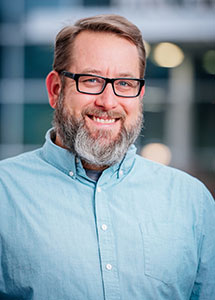
While the funds may be directed to purchasing datasets, protecting time or paying publishing costs, the ultimate commonality is that the Faculty Development Grants act “as seed money to work toward tenure.”
— Chris Biga, Ph.D., associate professor in the Department of Sociology, who has co-led the Faculty Development Grants Program selection committee for the past two years
Amber Genau, Ph.D., is an associate professor in the Department of Materials Science and Engineering. In 2013, she was a young faculty member only a few years separated from her doctoral work and a two-year stint at the German Aerospace Center in Cologne when she applied to the Faculty Development Grants Program. “Preparing that application helped me think about my research program and what direction I wanted it to go when I was quite new to UAB and to being a professor,” Genau said. “It also provided funds for me to buy a piece of equipment that helped me get preliminary data for later proposals.” Those proposals included an application to the National Science Foundation’s prestigious CAREER award program, which supports early career-development activities of faculty. In 2017, Genau received the CAREER award, and nearly $450,000 to support her work on the freezing behavior of a type of metal alloy that includes cast iron and electronic solder. “And that equipment is still being used by my students on a regular basis,” Genau said.
In the social sciences and the arts and humanities, meanwhile, “$10,000 can allow you to do some pretty crazy stuff,” Biga said. “You can get access to critical datasets, for example.” Or finance the production of a documentary.
In the social sciences and the arts and humanities, meanwhile, “$10,000 can allow you to do some pretty crazy stuff,” Biga said. “You can get access to critical datasets, for example.” Or finance the production of a documentary. Alan Franks, assistant professor in the Department of Communication Studies, received a Faculty Development Grant in 2020 to produce a film on the human and environmental impact of the devastating 2019-2020 bush fires in Australia. “Alan wanted to do a documentary, but he first needed to get to Australia,” Biga said. “Ten thousand dollars literally pays for three years of travel, research, editing, music scores and everything else that it takes to produce a film.” The coronavirus pandemic has delayed Franks’ trip, but he is preparing to travel to Australia as soon as possible.
A Faculty Development Grant in 2017 “was critical in pushing my first book project across the finish line” by funding a monthlong research trip to Chicago, said Andrew Baer, Ph.D., assistant professor in the Department of History. At that point, Baer had already completed the bulk of the manuscript that would become “Beyond the Usual Beating: The Jon Burge Police Torture Scandal and Social Movements for Police Accountability in Chicago,” which was published by the University of Chicago Press in 2020.
Anonymous readers of his manuscript in progress “highlighted a few areas where the book needed revisions,” Baer said. With his grant, “I used my time in Chicago to perform oral history interviews of persons central to my narrative,” he said. “I also spent weeks in the archives of the criminal court building in downtown Chicago, where I read through thousands of pages of court briefs from death penalty cases. These documents provided sources that other researchers had not utilized in publications on the same topic.” Baer also gave a guest lecture at Northwestern University and reflected on his professional journey to UAB.
“It was a wonderful experience made possible by the Faculty Development Grants Program,” Baer said. “The grant made my book better. I am quite grateful for the experience, and I highly recommend junior faculty apply.”
Hear more from FDGP recipients
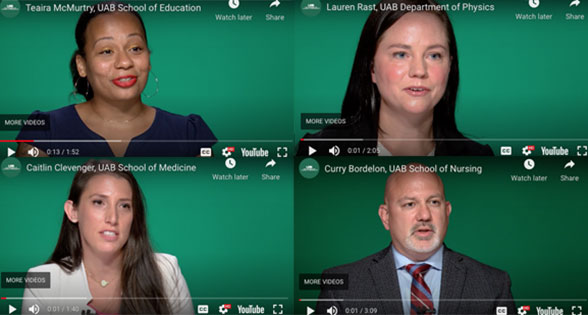 Find out how to apply for the next round of Faculty Development Program Grants and watch five faculty selected for this year's grants discuss their projects on the UAB Faculty site.
Find out how to apply for the next round of Faculty Development Program Grants and watch five faculty selected for this year's grants discuss their projects on the UAB Faculty site.
In April 2021, 21 faculty were awarded support for creative works, scholarship and research. Here is a closer look at some of these projects, and the people behind them.
Violent short stories as social protest
Carolina Tsouroukdissian, Ph.D.
Department of Foreign Languages and Literatures
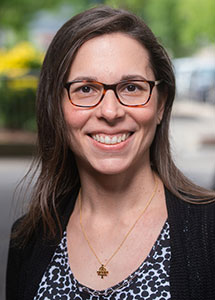 Carolina Tsouroukdissian, Ph.D.Tsouroukdissian is putting the finishing touches on a manuscript “about the prevalence of social criticism in short fiction during the period of nation formation in Latin America,” she said. In “A Pedagogy of Horror: Social Protest in Latin American Short Fiction (1830-1920),” “I argue that short fiction was an important platform for social protest” in that period, she said. “Authors used the short story genre to campaign against issues such as slavery, racism, government incompetence, poverty and gender inequality.” These tales, quickly consumed, “resembled Twitter,” she added — perfect for readers with short attention spans and capable of reaching a wider audience through newspapers, school textbooks and magazines in addition to standalone books. Their plots “were filled with violence and death with the purpose of shaking the reader and motivating a reflection.” Children’s books were presumed to be innocuous, so authors, especially female authors, “used them as a safe platform to do social criticism,” Tsouroukdissian said. “For example, in colonial Cuba, some of the few antislavery stories that could be published were precisely children’s stories that did not raise suspicion from censors.”
Carolina Tsouroukdissian, Ph.D.Tsouroukdissian is putting the finishing touches on a manuscript “about the prevalence of social criticism in short fiction during the period of nation formation in Latin America,” she said. In “A Pedagogy of Horror: Social Protest in Latin American Short Fiction (1830-1920),” “I argue that short fiction was an important platform for social protest” in that period, she said. “Authors used the short story genre to campaign against issues such as slavery, racism, government incompetence, poverty and gender inequality.” These tales, quickly consumed, “resembled Twitter,” she added — perfect for readers with short attention spans and capable of reaching a wider audience through newspapers, school textbooks and magazines in addition to standalone books. Their plots “were filled with violence and death with the purpose of shaking the reader and motivating a reflection.” Children’s books were presumed to be innocuous, so authors, especially female authors, “used them as a safe platform to do social criticism,” Tsouroukdissian said. “For example, in colonial Cuba, some of the few antislavery stories that could be published were precisely children’s stories that did not raise suspicion from censors.”
That includes Cirilo Villaverde’s 1847 story, “El Niño Inconsiderado” (“The Inconsiderate Boy”), about an abusive 8-year-old white boy named Diego, who “rehearses his tyrannical skills by exploiting and hitting his pet goat,” Tsouroukdissian said, “and also by bossing around Pablo, a child slave who emerges as the moral voice of the story. One day, Pablo surprises Diego hitting the goat. Pablo advises Diego to stop, but Diego does not listen. Instead, he commands Pablo to hit the goat too. The child slave initially resists, but he then obeys his master. In the end, the goat — possibly a metaphor for the insurgent slave — attacks the white boy, making his head bleed profusely. After the incident, Diego changes his behavior and stops being an abusive child.” Despite the censorship of the time, this antislavery tale was widely read in private and public schools across Cuba.
“Due to the crisis in the humanities, academic presses have been transitioning to a model based on author subventions. After inquiring to a number of high-ranking university presses... I found that they charge the author an average subvention fee of $4,500-$5,000.”
Tsouroukdissian’s own manuscript faces hurdles not from censors but from the brutal economics of academic publishing. “Due to the crisis in the humanities, academic presses have been transitioning to a model based on author subventions,” she said. “After inquiring to a number of high-ranking university presses for which my book project would be a good fit, I found that they charge the author an average subvention fee of $4,500-$5,000 to cover editing, proofreading, cover design, printing, indexing and promotion costs.”
In April, Tsouroukdissian learned she would be able to cover those costs, along with her time needed to revise her manuscript and submit book proposals to at least eight academic presses. “My book will fill a void in the field of Latin American literary studies as there are no comprehensive monographs about the prevalence of social criticism in short fiction during the period of nation formation in Latin America,” she said.
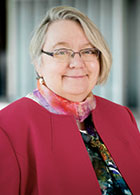
“The program helps faculty take on creative new efforts for which funding is not generally available. Funding faculty in this way enables them to build new skills to enhance peer recognition across campus and beyond UAB.”
— Provost Pam Benoit, Ph.D.
Stress and homelessness at the molecular level
Jenny Gao, Ph.D.
Department of Clinical and Diagnostic Sciences
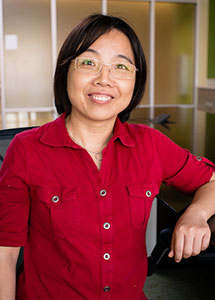 Jenny Gao, Ph.D.Gao wants to investigate a novel marker of the impact of homelessness: stress and cardiometabolic diseases. One way to measure the impact of stress on health is through a measure known as allostatic load, “which represents the wear and tear the body experiences,” Gao said. An increase in allostatic load is a major contributor to the onset of cardiometabolic diseases — hypertension, high fasting blood sugar, abdominal obesity and elevated triglycerides. “So the homeless are at a higher risk of these diseases,” Gao said. Stress is also significantly associated with accelerated cellular aging, “which is indicated by telomere length attrition,” she said. Telomeres are structures at the end of chromosomes inside our cells that protect the chromosomes during cell division; you can think of them as the plastic tips on the ends of shoelaces that stop the shoelace from fraying.
Jenny Gao, Ph.D.Gao wants to investigate a novel marker of the impact of homelessness: stress and cardiometabolic diseases. One way to measure the impact of stress on health is through a measure known as allostatic load, “which represents the wear and tear the body experiences,” Gao said. An increase in allostatic load is a major contributor to the onset of cardiometabolic diseases — hypertension, high fasting blood sugar, abdominal obesity and elevated triglycerides. “So the homeless are at a higher risk of these diseases,” Gao said. Stress is also significantly associated with accelerated cellular aging, “which is indicated by telomere length attrition,” she said. Telomeres are structures at the end of chromosomes inside our cells that protect the chromosomes during cell division; you can think of them as the plastic tips on the ends of shoelaces that stop the shoelace from fraying.
“Telomere length attrition has been strongly linked to allostatic load exposure and the consequent cardiometabolic diseases,” Gao said. “However, as of today, no study documents the impacts of homelessness-associated stress factors on telomere length attrition.”
That is what Gao will do with her Faculty Development Grants Program-funded project, The Association of Stress Factors and Cardiometabolic Diseases in Homeless Population. Using different specimens from patients who have experienced homelessness, including blood and saliva, Gao will measure telomere length and allostatic load in hopes of determining whether there is a correlation between the frequency, duration or severity of homelessness and these tests.
The work could identify key homelessness-associated factors that contribute to the increased risk of cardiometabolic diseases among homeless people, and eventually point the way to better treatments and other interventions, Gao says. (Watch Gao discuss her project in this video on the Faculty site.)
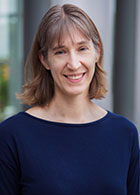
“Preparing that application helped me think about my research program and what direction I wanted it to go when I was quite new to UAB and to being a professor. It also provided funds for me to buy a piece of equipment that helped me get preliminary data for later proposals.”
— Amber Genau, Ph.D., associate professor in the Department of Materials Science and Engineering
Toward more compassionate dementia care
Cindy Cain, Ph.D.
Department of Sociology
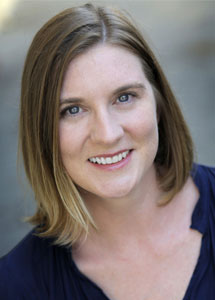 Cindy Cain, Ph.D.Cain’s award is extending her ongoing research in dementia care and the drafting of a proposal for a book that will “offer new insights useful for training nurses, nursing assistants and other care workers,” she said. It also will “speak to central questions in the sociology of care work and medicalized workplaces.” In 2019, there were 5.8 million Americans living with dementia, according to the Alzheimer’s Association, “many of whom need ’round-the-clock care,” Cain said, and some 30 percent of whom “live in institutional settings where care is provided by paid caregivers.”
Cindy Cain, Ph.D.Cain’s award is extending her ongoing research in dementia care and the drafting of a proposal for a book that will “offer new insights useful for training nurses, nursing assistants and other care workers,” she said. It also will “speak to central questions in the sociology of care work and medicalized workplaces.” In 2019, there were 5.8 million Americans living with dementia, according to the Alzheimer’s Association, “many of whom need ’round-the-clock care,” Cain said, and some 30 percent of whom “live in institutional settings where care is provided by paid caregivers.”
Nursing homes have increasingly committed “to using ‘person-centered’ approaches that include getting to know the person with dementia, working within their reality, engaging persons with dementia in meaningful activities, building relationships, creating a supportive community and changing care practices as needed,” Cain said. “However, person-centered approaches can be especially challenging when serious impairments make communication difficult and cause changes in behavior and personality.”
Persons with dementia can lose sense of their own names and their ability to communicate with others and experience a lowering of inhibitions that leads to violation of social norms. “Providing high-quality care to a person with dementia requires responding to these communicative challenges in personhood-enhancing ways,” Cain said. Her interviews with care workers about their practices will “document the kinds of interactions that most support personhood and the kinds of interactions that undermine personhood,” Cain said.
“In dementia care, the idea of personhood is elevated to the ‘gold standard’ of care,” Cain said. “However, extant definitions of personhood lack an understanding of how interactions with care providers either support or undermine personhood. In sociological terms, the interactional order establishes our personhood, also referred to as our ‘sacred selves.’” Sacred selves, which is the tentative title of Cain’s proposed book, “is part of a sociological theory about how interaction rituals bestow individuals with a sense that they are important to others,” she said. Cain is currently collecting qualitative data on interactions between people with dementia and their caregivers in nursing homes, which “will be useful for refining concepts of personhood and understanding how care workers can better support the ‘sacred selves’ of people with dementia.” Cain will use her Faculty Development Grant funding to support a research assistant, purchase supplies and travel to meet with potential book publishers.

“It was a wonderful experience made possible by the Faculty Development Grants Program. The grant made my book better. I am quite grateful for the experience, and I highly recommend junior faculty apply.”
— Andrew Baer, Ph.D., assistant professor in the Department of History
Breaking down low-fidelity coronaviruses
Hui-Ting Lee, Ph.D.
Department of Chemistry
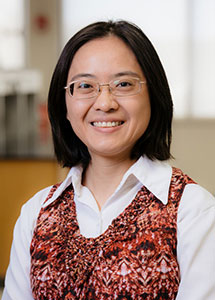 Hui-Ting Lee, Ph.D.Lee specializes in super-resolution imaging to uncover new insights on the structural dynamics of DNA and RNA, particularly in cases of DNA damage and gene regulation in cancer. The COVID-19 pandemic has pushed her in a new research direction, however. “RNA viruses, including coronaviruses such as SARS-CoV-2, have a higher mutation rate compared to other viruses,” Lee said. The reason: RNA polymerase, the molecular machine that builds new viruses from amino acids inside the host cell, suffers from “low fidelity.” RNA polymerases working on an RNA strand are surrounded by other strands. If a person is infected with more than one strain of a virus — say, the now-predominant B.1.1.7 (U.K.) strain of SARS-CoV-2 and the emerging P.1 (Brazil) strain.
Hui-Ting Lee, Ph.D.Lee specializes in super-resolution imaging to uncover new insights on the structural dynamics of DNA and RNA, particularly in cases of DNA damage and gene regulation in cancer. The COVID-19 pandemic has pushed her in a new research direction, however. “RNA viruses, including coronaviruses such as SARS-CoV-2, have a higher mutation rate compared to other viruses,” Lee said. The reason: RNA polymerase, the molecular machine that builds new viruses from amino acids inside the host cell, suffers from “low fidelity.” RNA polymerases working on an RNA strand are surrounded by other strands. If a person is infected with more than one strain of a virus — say, the now-predominant B.1.1.7 (U.K.) strain of SARS-CoV-2 and the emerging P.1 (Brazil) strain.
While reading out its instructions on one strand of RNA, RNA polymerase may suddenly jump across to a nearby RNA strand from a similar but distinct mutant strain. Coronavirus RNA is prone to this active recombination, in which different strains of a virus within the same person — a person infected with two different strains of SARS-CoV-2, for example — mutate further by swapping sections of their genomes. But “the exact mechanism of genetic recombination in coronaviruses remains unclear,” Lee said. One area of particular interest is breakpoints — the spots along the genome where these recombination events occur. “Recombination site breakpoints in the viral genome appear to be random,” Lee said. But are they?
“It is known that long single-stranded RNA can adopt multiple complicated secondary and tertiary structures,” Lee said. She proposes that a combination of genomic sequence and the local secondary structure “might trigger RNA polymerase translocation and induce genetic recombination.” Lee’s 2021 Faculty Development Grant will allow her to use “next-generation sequencing methods to screen for sequences that have high recombination tendency,” she said. Lee will then determine the local secondary structure adjacent to the recombination breakpoint.
Data from this project “will help to develop a new long-term project revealing the mechanism of coronavirus genetic recombination, and help develop new therapeutic and preventive treatments for COVID-19 and other closely related coronavirus diseases,” Lee said. “If we can recognize the pattern of breakpoints, we can avoid them when designing messenger RNA vaccines and make the vaccines provide more universal protection. Moreover, if we can find out a pattern that increases the break rate and reduces translocation rate — stop it from hopping to another strand — we may even be able to design drugs to stop virus replication.”
Related story
Learn how Teaira McMurtry, Ph.D., a new faculty member in the School of Education, is helping teachers see the beauty in Black language.
The backstories behind social media slanders
Jordan Kiper, Ph.D.
Department of Anthropology
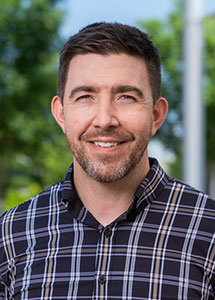 Jordan Kiper, Ph.D.Kiper’s dissertation explored the causes and motivations of collective violence in the Yugoslav Wars of 1991-2001, motivated by his abiding interest in the mechanics and outcomes of propaganda.
Jordan Kiper, Ph.D.Kiper’s dissertation explored the causes and motivations of collective violence in the Yugoslav Wars of 1991-2001, motivated by his abiding interest in the mechanics and outcomes of propaganda.
As he interviewed and surveyed ex-fighters and survivors in former combat regions of Bosnia-Herzegovina, Croatia and Serbia, Kiper uncovered two recurring motifs. The first is “what we today would call ‘fake news,’” he said, which “contributed significantly to many Serbian fighters’ believing that they needed to volunteer for, or support, the wars, including military campaigns that contributed to human rights violations, to protect Serbian populations.” For the Croatian and Bosniak populations, “many experienced greater ingroup cohesion after hearing the inflammatory language of Serbian ultranationalists,” Kiper said. What both groups tapped into, however, was a wellspring “of people’s prior fears about neighboring populations in light of conflicts from decades and even centuries earlier.”
As he dug deeper into Yugoslav history, “I found that the tropes of many fake-news stories and inflammatory ultranationalist rhetoric in Serbia was strikingly similar to narratives from prior historical eras, including the Balkan Wars, World War I and World War II,” Kiper said.
Kiper was doing his fieldwork during the 2010s, “when Serbia’s attempts at democratization and joining the European Union began to unravel and nationalists once again gained prominence in politics,” he said. The times and technology had changed, but the words had not.
“I noticed the tropes, rhetorical moves and worldviews expressed in the Yugoslav Wars come back — except in a new form: on social media,” Kiper said. “In particular, a new wave of propaganda was being used on social media against human rights activists, reporters, investigators and prosecutors. Despite being new and seemingly from the bottom up instead of top down, it used similar ideas, cultural narratives and cognitive frames that resembled propaganda from prior eras.”
"A new wave of propaganda was being used on social media against human rights activists, reporters, investigators and prosecutors. Despite being new and seemingly from the bottom up instead of top down, it used similar ideas, cultural narratives and cognitive frames that resembled propaganda from prior eras.”
— Jordan Kiper, Ph.D., assistant professor in the Department of Anthropology
That observation led Kiper to his current collaboration with legal scholars Molly Land, J.D., and Richard A. Wilson, Ph.D., of the University of Connecticut, who had observed “similar dynamics of harassment and intimidation of human rights defenders in other countries,” Kiper said. “The three of us have thus collaborated to understand the science of incitement — namely, does language on social media incite violence, and if so, how?”
Although “there is a growing body of literature on the psychological effects of rumors, conspiracies and explicit hate speech, little research has looked at the speech acts in propaganda campaigns that arguably contribute to collective violence,” Kiper said. “In a series of experiments, my colleagues and I found some surprising results, including that, contrary to prosecutors and most literature on dangerous speech, dehumanizing speech acts were not consistently likely to support violence. Instead, people’s commitments to their ingroup and strong commitments against an outgroup were consistently and significantly increased by speech acts centered on revenge.”
With his Faculty Development Grant, Kiper will carry out an ethnographic study investigating “the nature of coordinated social media campaigns targeting human rights defenders in Serbia and Kosovo,” he said.
Social media companies use content moderation to remove overtly inflammatory or violent posts, Kiper says. But they often miss several trends in online speech, he adds. “The speech that is possibly most dangerous but gets missed is replete with tropes and worldviews tied to former eras of ultranationalist and ethnic-nationalism or even ethnoreligious nationalism,” Kiper said. It also is “full of coded expressions or euphemistic speech that references long-time scapegoats or targeted communities and is part of a network of online influencers, state media, conspiracists and trolls linked to the state.” These nuanced patterns mean that “social media companies may not be fully aware of the undercurrents of culture in some parts of the world and aren’t equipped to detect speech that is not obviously hate speech,” Kiper said. “And the companies and current legal models of dangerous speech perhaps focus too much energy on one-time speech acts and too little on the greater networks of what scholars of digital media are calling ‘populist techno-authoritarianism.’”
This work should lead to a series of academic articles, Kiper said, but the ultimate goal “is to channel my research into an ethnography on propaganda in anthropology, which I aim to publish in the next few years.”
